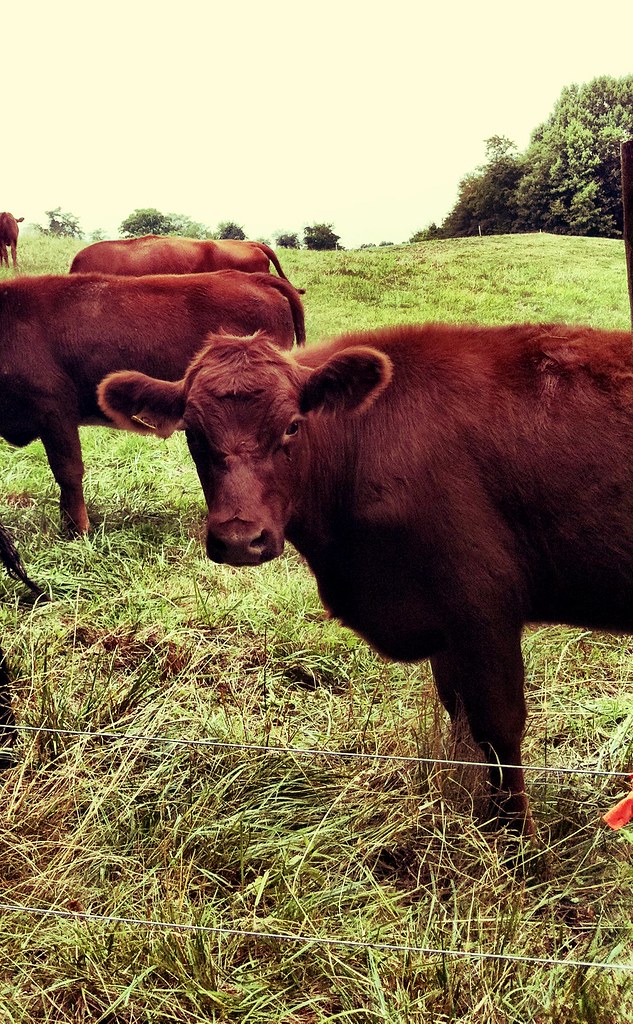Our senses have a major impact on how we perceive the food we eat and how it affects our culinary experiences. Every detail adds to our total delight, from the sizzling sizzle of a freshly cooked steak to the enticing flavours that dance on our taste senses.
Increasing interest in ethical and sustainable agricultural methods has resulted in a rise in the popularity of grass-fed beef in recent years. Beyond the health advantages it is said to provide, there is an intriguing query: Does grass-fed beef smell different?
Indeed, the aroma of grass-fed beef distinguishes it from beef from conventionally grown animals. The distinctive aroma that comes from the meat is a result of the food and way of life of grass-fed cattle. Grazing on a natural diet of grass and other forages, grass-fed cows graze in contrast to their grain-fed counterparts. This herbaceous diet gives the meat a faint, earthy aroma that is detectable even before it is cooked on the grill or cooktop.
The natural scent of grass-fed beef is further enhanced by the absence of hormones and antibiotics typically employed in conventional cow production. Richer, fresher, and more pronounced are common adjectives used to describe the aroma that results, connecting the consumer to the meadow and the animal’s original habitat. As we examine the olfactory characteristics of grass-fed beef, it becomes clear that the distinctive aroma is a crucial component of the sensory experience, enhancing our appreciation of this flavorful protein that is raised responsibly.

Does the aroma of grass-fed beef affect its taste and overall flavor profile?
Grass-fed beef’s flavour and overall flavour profile can be affected by its scent. The intricate process of flavour detection is aided by the olfactory senses, which are essential to our perception of taste. Our brain mixes the sensory information from taste and fragrance when we smell food to produce a single flavour experience.
Before we even take a bite, the distinctive fragrance of grass-fed beef with its earthy and grassy undertones can pique our taste senses and shape our expectations. Since the fragrance primes our palate for the flavours to come, this anticipation can improve how much beef is generally enjoyed.
Furthermore, a more distinct and powerful flavour profile may be produced by the natural and varied diet of grass-fed cattle, which mostly consists of grass and forage. In comparison to beef that has been reared conventionally, the distinctive fragrances found in grass-fed beef can enhance and complement the flavour.
It’s crucial to remember that each person can have different fragrance sensitivities and personal preferences. While some people might believe the aroma of grass-fed beef improves its flavour, others might have different tastes or not detect a noticeable change.

Are there any variations in smell among different cuts of grass-fed beef?
Different slices of grass-fed beef may smell differently from one another. The exact muscle types, amount of fat, and connective tissues found in distinct cuts of meat all have an impact on the scent.
For instance, leaner cuts like tenderloin or sirloin may not have as strong of a fragrance as those with more fat, such ribeye or beef brisket. The meat’s lipids may help give off a deeper, tastier aroma.
Additionally, the amount of connective tissue in certain muscle groups might vary, which can impact the scent. Cuts from muscles that are more actively used, like the shoulder or leg, may smell a little different than cuts from muscles that are less frequently used, like the loin.
It’s crucial to note that the aroma differences between various cuts of grass-fed beef are often mild and can be more apparent to trained palates or people who are especially sensitive to aromas. The nutrition, breed, and management of the animal are just a few of the many variables that affect the meat’s overall quality, softness, and flavour in addition to how it smells.

Does the cooking process alter the smell of grass-fed beef?
Beef that has been raised on grass can smell different after cooking. Heat-induced chemical changes during the cooking process of beef can alter the meat’s aroma. The Maillard process, cooking technique, temperature, and other variables all affect these changes.
When meat is heated, a chemical reaction known as the Maillard reaction takes place between the flesh’s amino acids and reducing sugars. It causes browning and the emergence of sophisticated flavours and smells. The Maillard reaction can aid in the creation of new aroma compounds that improve the flavour of cooked grass-fed beef as it cooks.
Additionally, the scent of grass-fed beef can be affected differently by various cooking techniques. flesh can be given distinctive flavours and aromas by braising, roasting, grilling, or pan-searing various aromatic compounds into the flesh. The natural scents of grass-fed beef can also combine with the heat, lipids, and spices used during cooking to produce a distinct fragrance.
It’s important to note that different people have different tastes in the aroma of cooked grass-fed beef. While some people might like the rich, savoury odours that are produced when cooking, others could have different tastes or sensitivities.
Overall, the Maillard reaction and the addition of additional aromatic compounds during cooking can change how grass-fed beef smells. These adjustments can increase how much you like the cooked grass-fed beef and add to the entire sensory experience.
Relevant Articles
How Long Does Beef Tallow Last?

Comments are closed